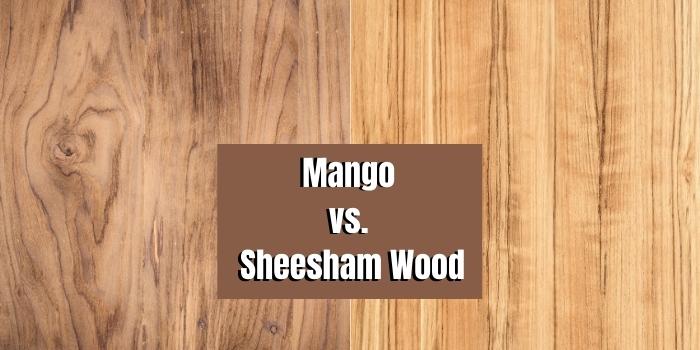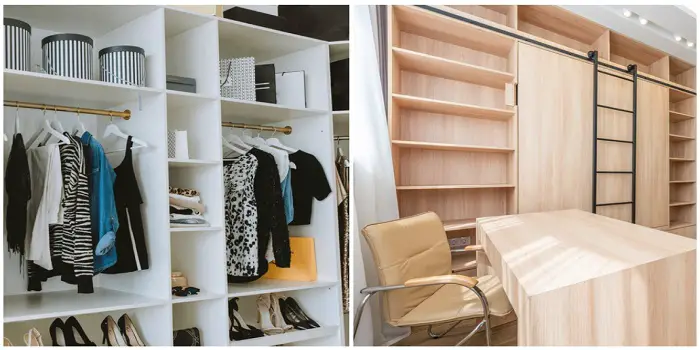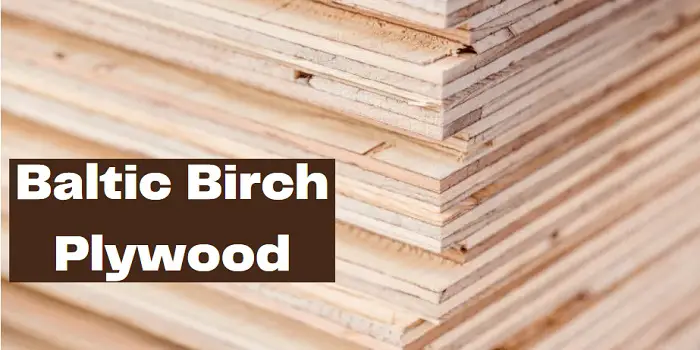
Walnut is a domestic variety of wood, which most woodworkers and builders consider to be one of the most desirable types of wood to work within a variety of different capacities.
Walnut trees are grown and harvested throughout the United States, which you’ll find in the North and South-Eastern US, the Mid-West states, California, and even Texas.
However, different woodworkers and builders may prefer Walnut wood from specific locations due to the slight differences in how they’ve grown.
Due to the beauty of Walnut timber, it’s often used for creating specialty pieces of furniture, trim, and special projects that require high-quality and beautiful wood.
A significant benefit of Walnut is that it’s dimensionally stable; it won’t twist or warp in general. In addition, it’s incredibly durable, so it won’t rot or decay as easily as some other woods.
The biggest issue you’ll have with Walnut is that it’s not especially bug resistant, so be wary of where you use it and what bugs may be prevalent in the area.
Walnut Wood
| Source: | Walnut tree (Juglans Nigra) |
| Color: | Usually, light brown to dark chocolate |
| Density: | 630 kg/m3 |
| Janka scale: | 1,010 lbf |
| Type: | Hardwood |
| Cost: | Expensive than many other wood varieties |
| Common Uses: | Cabinets, flooring, paneling, veneers, and novelties like gun stocks, sunglasses, etc. |
Characteristics & Grain Pattern
Walnut is typically a hardwood that ranges in color and that color is most often determined by where in the tree the most originated.
Sapwood is the outermost part of the tree; its color ranges from yellow, and grey to an almost cream color.
Heartwood is the innermost part of the tree, and in Walnut tree timber, it comes in a range of attractive colors that make it perfect for showpieces, rather than hiding it behind walls as standard lumber.
You’ll find light to dark brown, some grey, red grays, purples, and dark streaks throughout all the pieces, which only adds to the uniqueness of each piece of wood.
The key characteristics of US Walnut are:
- Dimensionally stable so that it won’t twist or warp easily
- Durable but reasonable light.
- Excellent resistance to shock or damage.
- Perfect material to work with in carving and making furniture.
- Very pliable while staying strong, so suitable for bending for specific jobs.
- Massive range of attractive colors.
Walnut most often has a straight grain, though it is somewhat abrasive in texture. It may have some irregular but still interesting waves or curls in it.
Many woodworkers find the unique nature of the grain pattern to add an interesting flavor to their projects.
You may get a “crotch grain” where tree branches split, similar to how your legs are, and as each year passes, a new tree ring grows in the tree.
Due to the crotch areas, things are very crowded, and you start to get rings going all over the place in interesting directions.
A burl is created on a tree when it undergoes some kind of trauma, whether that’s damage, fungus, or some sort of virus.
Burlwood from Walnut is always interesting in appearance. It’s often a swirled shape but is always unique and sort after.
Walnut has a very distinct pattern in it and a variety of attractive colors to enhance any patterns that appear.
As a result, it’s not often uniform in appearance, making Walnut so enjoyable to use in unique pieces of furniture.
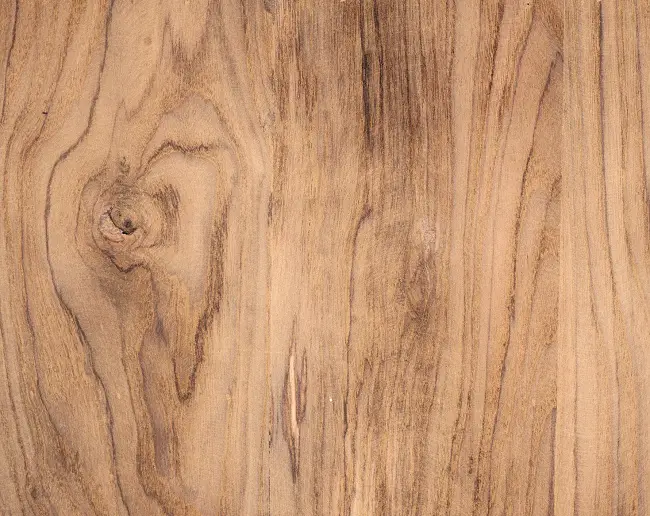
Different Types of Walnut Wood
It doesn’t matter if you’re a woodworker, builder, or just a homeowner looking for some interesting furniture for your home.
Walnut comes in a number of different varieties, and knowing which is best for your purchases will significantly assist you in your project.
Take a little time to review the different options and see how each fits different projects or requirements best.
1. English Walnut Wood
If you love eating walnuts, the nut, and not tree bark, it is most likely the English Walnut Wood that produces them for you.
It has a number of different names, depending on who you’re talking to, but they could include Circassian Walnut, French Walnut, Common Walnut, and European Walnut.
These Walnut trees can be found in western Asia as well as Eastern Europe. They can grow to be 35m tall with a circumference of 2m.
It’s a pretty expensive wood to purchase, and you’ll often find veneer forms of English Walnut Wood due to the price.
Colors for the English Walnut Wood can range from light to dark brown, or even almost white color.
Different drying methods will also change the color, so you may find more interesting colors depending on who and where the wood was dried.
As with most Walnut trees, it’s durable, strong, and great for working with. However, it is only moderately resistant to bugs. So be aware of what bugs are in your area and where you use this wood.
2. Black Walnut Wood
Black Walnut Wood is a popular type amongst woodworkers; it’s extremely strong, easy to mold, dimensionally stable, and resistant to shock.
Most Black Walnut Wood is from the Eastern United States. It can grow 37m tall but generally only 0.6m – 1m in circumference, so it is tall and skinny.
The Black Walnut Wood tree has a similar color profile as the English Walnut Wood.
You’ll find it in a pale yellow to dark brown color. And sometimes also in grey-yellow color or even white.
When used, the wood is highly durable, rot-resistant, and will work well for many of your projects. However, as with all Walnut wood, it’s not especially bug-resistant.
Black Walnut Wood is still on the pricier side but is cheaper than many other Walnut variants due to how abundant it is. So, it’s a great option when doing cabinets, panels, and anything where you might want a lot of Walnut wood to use.
3. Claro Walnut Wood
Claro Walnut Wood is grown in the Western United States, primarily in California and Oregon. The trees are between 9m – 18m tall and are 1 – 1.5m in circumference.
Just like most Walnut trees, they come in a light brown to darker chocolate brown color.
Some people will graft Claro Walnut trees with English Walnut Wood to produce a unique color streaking on the grain of the wood, which is very interesting and can do well when making custom furniture pieces.
This type of grafted wood is called Marble Claro Wood which can be very expensive and often used for the stock on guns due to its beautiful appearance. So, if you ever see a wood gunstock, it may very well be Marble Claro Wood.
4. White Walnut Wood
White Walnut Wood is a surprisingly light color, though not exactly white; it’s a light or medium tan.
In addition, it’s a much softer wood than other Walnut varieties, which makes it less durable than other types of Walnut.
Due to the softness of White Walnut timber, it’s easy to work with and mold. However, it is not ideal where strength or durability from the woodwork is required. Use it mainly for furniture or custom molding.
5. Bastogne Walnut
Bastogne Walnut is crossbreeding of English Walnut Wood and Claro Walnut Wood. However, it differs in size and appearance from Marable Claro Wood to a fairly large degree.
It grows much faster and much stronger than both English Walnut and Claro.
The other interesting thing is that the Walnuts it produces are of much poorer quality than what you get from the English Walnut and Claro, so it’s interesting how it’s turned out quite differently from its parents.
However, due to the strength of the wood and its durability, it provides excellent lumber.
You’ll find this variety of Walnut timber in California, and they can grow up to 30m tall and have a circumference of around 1m – 1.5m.
The lumber is light brown to reddish-brown and has some streaks similar to what is found in the Marble Claro Wood.
6. Peruvian Walnut Wood
The Peruvian Walnut Wood is prevalent throughout much of South America and even as high as southern Mexico.
It’s around 9m – 18m tall and has a circumference of 0.6m – 1m.
It has the darkest wood of any other Walnuts, with dark chocolate brown or sometimes purple hue. You’ll also sometimes find light steaks throughout the wood.
Technically it is imported lumber for the United States, but it’s still on the cheaper side.
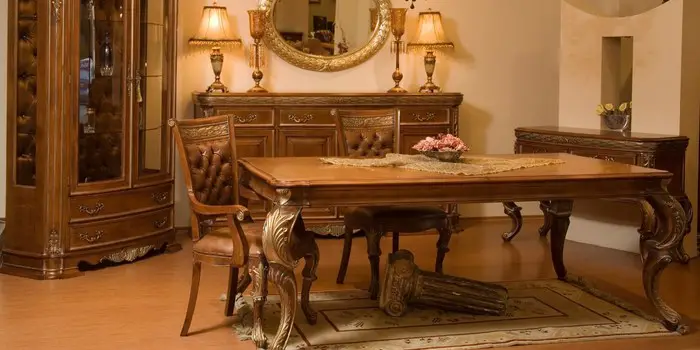
What is Walnut Wood Used For?
Different types of Walnut wood are used for different projects; while they all fall under the Walnut umbrella of trees, they come in different strengths, colors, and durability.
So that’s why we discussed each type, so you can make an informed decision on which type is best for your project and even your location.
You will find Walnut wood used for gun stocks, specialty furniture, luxury outdoor furniture, cabinets, panels, and even unique wood carvings or art.
In some cases, woodworkers make very complex or interesting items such as doorknobs, handles, and various wood-turned things, including grooved furniture, flooring, oars, and even coffins.
You just need to make sure you use the correct type of Walnut.
All varieties of Walnut wood have extremely beautiful and interesting lumber, with unique patterns that should be displayed.
Walnut wood should never be used as general lumber and should be on display in some capacity to showcase the unique grain and coloring provided by the tree.
Whatever you decide to use Walnut wood for, I’m sure you’ll enjoy the outcome and hopefully can appreciate what’s been made for many years to come.
What to Look for When Purchasing Walnut Furniture?
People often make a mistake when buying walnut furniture online.
What they think is real walnut wood furniture is actually a piece of furniture that is made from fake walnut wood that simply mimics the natural walnut wood colors.
Here are a few important things you should look at when buying a piece:
- Care: The level of maintenance that is required
- The finish used: the type of finish used on the piece of furniture
- Authenticity: Does it come with a real, natural walnut wood crafted with best-in-class techniques
- Quality and guarantee: Does the piece of furniture you are buying come with a proper warranty or lifetime guarantee
How to tell real walnut wood furniture?
One of the best ways to ensure that the piece of furniture you are buying is made from real walnut wood is to purchase it from a reputable furniture maker or dealer.
There are many local dealers out there that are not so trustworthy. They use similar-looking wood by altering the wood finish that mimics the walnut.
If you buy from them, most likely it’s the fake walnut wood furniture and not the original.
For beginners, an authentic piece will have a straight grain with maybe some curls.
Plus, you can check the walnut wood by looking at the above-mentioned characteristics which will hopefully help you buy the original furniture you are paying for.
Caring for your expensive walnut furniture
Caring for your walnut furniture starts with knowing what type of finish is used for sealing the wood in the first place.
You should start with regular dusting with a soft clean cloth. Wipe the furniture with warm soapy water at least once a week. And add natural Danish linseed oil finish at least once per year.
By no means use any commercial cleaners on your walnut furniture as they can be tough for walnut wood and can damage the wax, lacquer, or oil finishes already used on your furniture.

Hi, I am Mark Garner a professional carpenter, woodworker, and DIY painter. I live in the small city of Peoria, Arizona as a semi-retired woodworker. I have started this blog with a simple motive to help you with my wood experience in this sector. If you like to know more about what I love doing and how it all got started, you can check more about me here.


